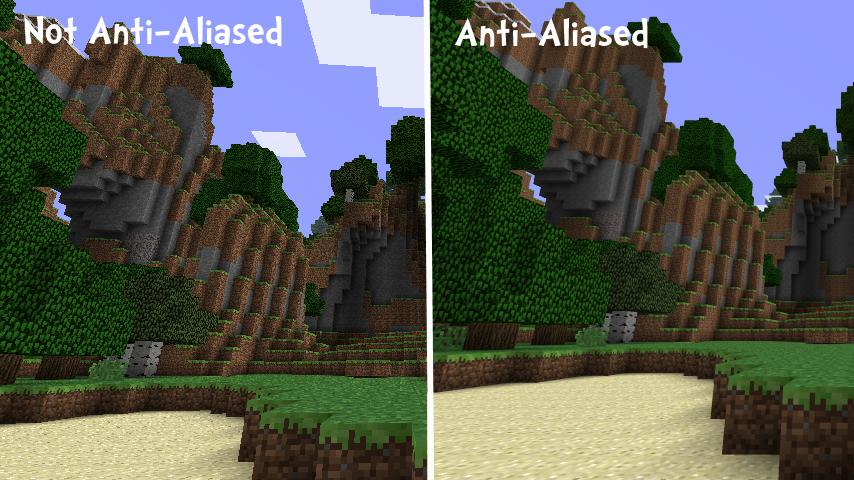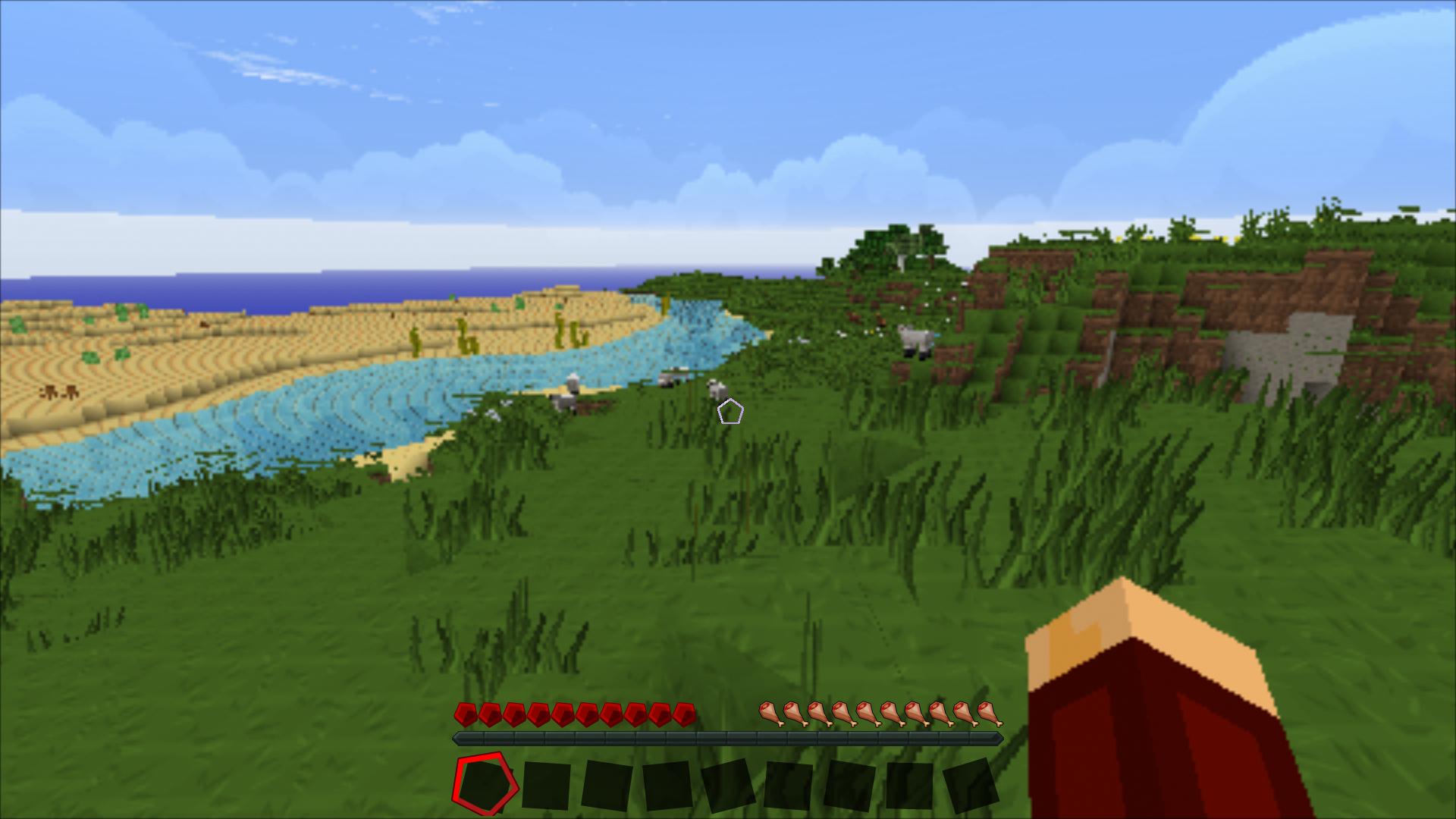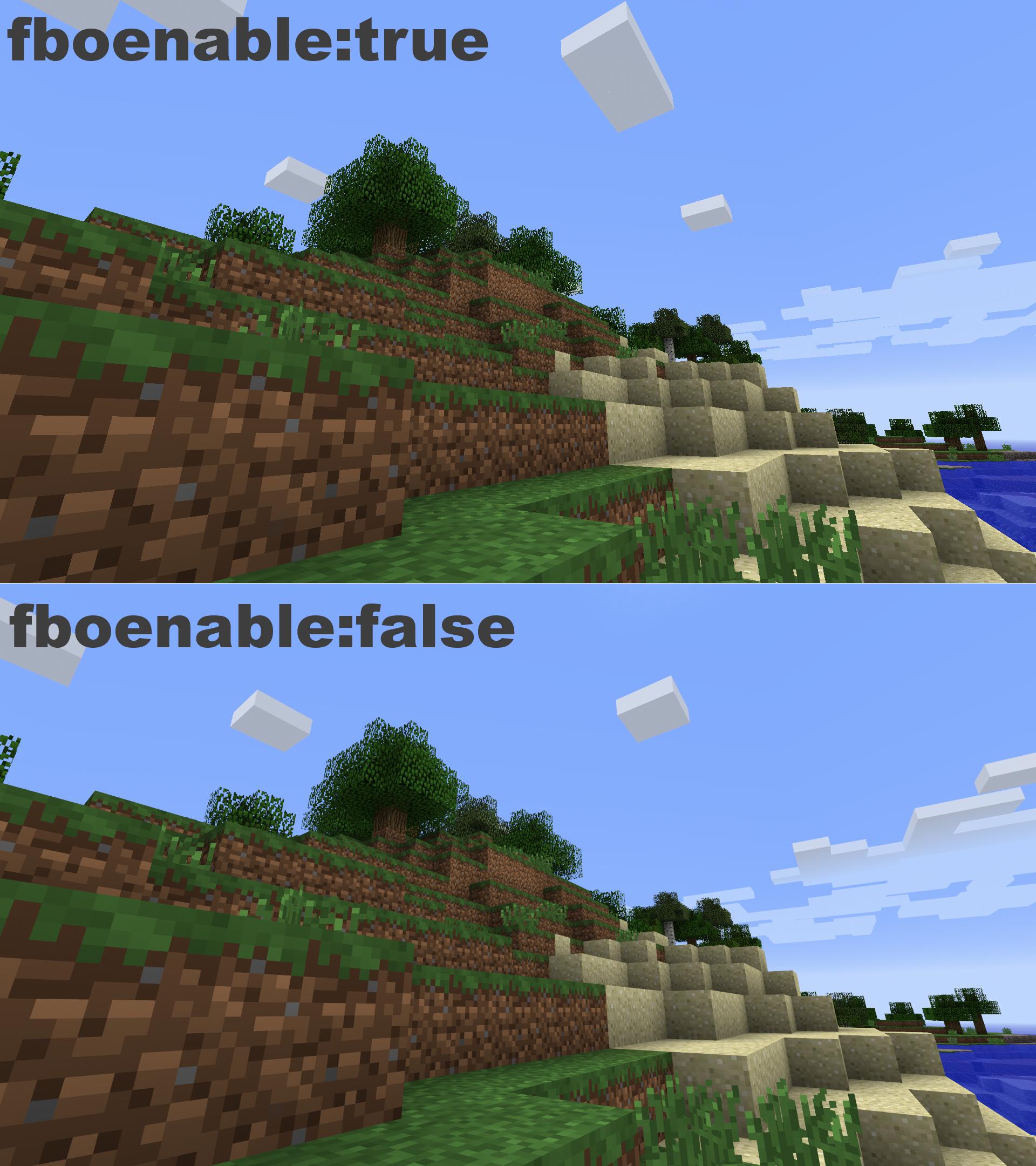Anti-aliasing is an important technique used to reduce the visibility of jagged edges in Minecraft and any other game. It helps to create smoother graphics and a more immersive gaming experience. To achieve this, anti-aliasing uses a combination of techniques such as blending colors, averaging colors, sub-pixel mapping, and edge detection.
In Minecraft, anti-aliasing can be turned on to give sharper visuals and smoother edges. This will help reduce the jagged appearance of objects such as blocks or structures in the game. Additionally, it can also improve the overall picture quality when using shaders or texture packs.
To enable anti-aliasing in Minecraft, you must change your video settings. Depending on your device, this may involve changing options in either the launcher or the game itself. On some systems, you may also find additional settings for controlling how much anti-aliasing is applied and what kind of effect it has on your graphics.
When setting up anti-aliasing in Minecraft, there are several factors to consider: the type of device you’re using; the version of Minecraft you’re running; and which graphics processor you have installed. Each of these will determine which features are available to you when adjusting your anti-aliasing settings.
For example, if you have an older system with limited graphical capabilities then you may find that only basic anti-aliasing is available. On more modern systems with powerful GPUs however, more advanced forms such as FXAA or MSAA might be available depending on your hardware setup.
It’s also worth noting that turning on anti-aliasing can affect performance – so if it’s causing excessive lag then it might be best to turn it off again until you upgrade your hardware! However if your graphics card and system are capable then enabling anti-aliasing in Minecraft can make a huge difference to both visuals and gameplay experience alike.
Do I Want Anti-aliasing On Or Off?
Anti-aliasing is a technique used to smooth out the edges of graphics. It can be helpful for people who experience jaggies, or unsightly lines around the edges of objects in games or on their screens. Most modern graphics cards and displays have anti-aliasing options that can be turned on or off.
If your visuals look great and you have a high-resolution display, you don’t need to turn on anti-aliasing options. Anti-aliasing is generally most helpful for people who have lower-resolution displays or who are having trouble seeing the edges of objects in their games or on their screens.

Is Anti-aliasing Better Off?
Anti-aliasing is a technique used to smooth out the edges of objects in a digital image. This can improve the appearance of the image, but it can also drag down the performance of your computer.

Is Anti-aliasing Good For FPS?
Anti-aliasing is a technique used in graphics processing to smooth out jagged lines and other aliasing artifacts. Aliasing is a common problem in digital images and videos, where the presence of high-frequency spatial noise creates an unpleasant “staircase” effect. Aliasing can be reduced or eliminated by usng an anti-aliasing filter.
There are several types of anti-aliasing filters, but they all have the same basic goal: to smooth out the image by filling in the gaps between the jagged lines. This requires extra processing power, which can slow down the frame rate of a game. In general, anti-aliasing will reduce the frames per second rate in FPS games.
How to Enable Anti-Aliasing For Minecraft | Make Minecraft Look Smoother
Is Anti-aliasing CPU Or GPU?
Anti-aliasing is a technique used in graphics processing to smooth out the appearance of jagged lines and stair-stepping on polygon edges. There are many diffrent types of anti-aliasing, but they can generally be classified into two categories: those that are CPU-intensive and those that are GPU-intensive.
MSAA (Multi-Sample Anti-Aliasing) is a type of anti-aliasing that is GPU-intensive. It works by taking multiple samples from each pixel and then combining them to create a smooth image. This requires the use of a lot of GPU resources, so it is not suitable for high-performance games.

MLAA (Morphological Anti-Aliasing) is a type of anti-aliasing that is CPU-intensive. It uses a mathematical algorithm to smooth out the image without requiring as many resources as MSAA. This makes it suitable for high-performance games, but it may not be able to achieve the same level of quality as MSAA.
Should I Turn On MSAA?
MSAA is a form of anti-aliasing that can be used to smooth out jagged lines and textures on a screen. It comes in dfferent levels of quality, with 4x being the highest. MSAA is not as taxing on a system as other forms of anti-aliasing, such as FXAA. However, it will still impact performance somewhat. Whether or not to turn it on depends on how much of an impact you are willing to accept in order to have smoother textures. If you are experiencing low frame rates, turning off MSAA may be the best option.
Is Smaa Better Than MLAA?
Both SMAA and MLAA are post processing AA techniques that work by detecting edges and then applying filters to smooth out the edge. SMAA is an improved version of MLAA, as it uses the GPU istead of the CPU. This makes SMAA faster than MLAA.
Can VSync Increase FPS?
VSync is a technology that helps to remove screen tearing in video games. Screen tearing occurs when the graphics card outputs more frames per second (FPS) than the monitor can display. This creates an ugly effect where the game image is split in two, with part of the image on one screen and part on another. VSync solves this issue by limiting the FPS to match the refresh rate of the monitor. This prevents the graphics card from sending more frames than the monitor can handle, whch eliminates screen tearing.
While VSync can help to improve image quality by preventing screen tearing, it also has some downsides. First, it can reduce FPS and make games run more slowly. Second, it can cause input lag, which makes the game feel sluggish and unresponsive. Finally, it is not compatible with all monitors and graphics cards.
Is VSync Better On Or Off?
VSync is a synchronization technology that helps to eliminate screen tearing and input lag. It’s enabled by default in most modern video games, but it can be disabled if needed. When VSync is turned on, the game will wait for the monitor to refresh before sending new frames to the display. This prevents the game from sending new frames to the monitor while it’s still refreshing old frames, which can cause screen tearing. When VSync is turned off, the game sends new frames to the monitor as soon as they’re ready, which can cause input lag and dropped frames.
What Is 4x MSAA?
4x MSAA is a form of anti-aliasing that smooths out the edges of objects in a scene. This makes the image look much cleaner and sharper, especially on curved or diagonal lines. It works by rendering the scene four times, each time with a different sample of the image. The results are then combined to produce a final image that looks smoother than it would without MSAA.
Does Anti-aliasing Improve Graphics?
Anti-aliasing is a technique used to improve the overall look of graphics by smoothing out jagged edges. Without anti-aliasing, these jagged edges can be quite noticeable and can take away from an otherwise smooth image. By blending adjacent pixels with the same color, anti-aliasing can help to produce a more realistic image that looks less blocky. While it is not always necessary, it can be a helpful tool for making graphics look their best.
Should I Use FXAA?
FXAA is a fast, lightweight anti-aliasing technique that can be used in place of more expensive techniques like MSAA or SSAA. It smooths out edges in a scene by applying a blur filter, and it’s availale on most modern graphics cards.
FXAA is less effective than othr anti-aliasing techniques at reducing aliasing artifacts, but it’s much faster and more efficient. If framerate is important to you, FXAA is a good option.
